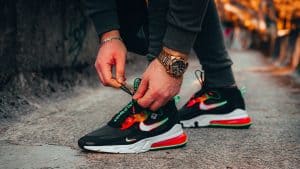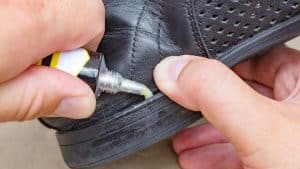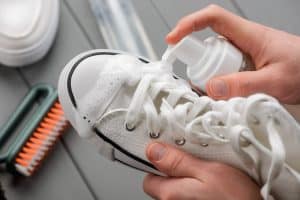If you're an avid hiker or someone who loves shoes, you know how frustrating it can be when your favorite pair of shoes start falling apart.
The soles tear away, holes form along the seams, and they just don't look as good as they used to.
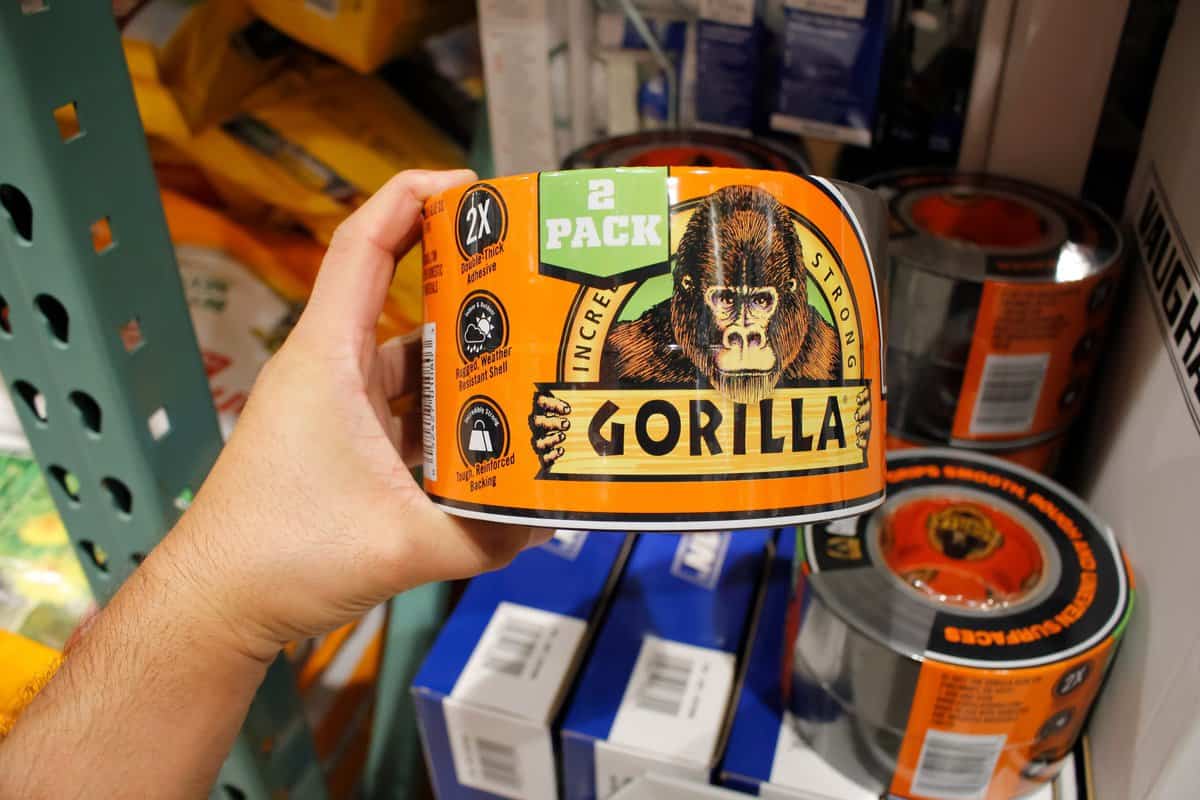
This article may include affiliate links and elements that were carefully created by our team using advanced ai to help you envision the best style advice.
But before you toss them out, you might wonder, can Gorilla Glue fix these shoes?
Keep reading to find the answer!
Does Gorilla Glue Fix Shoes?
If you're wondering whether Gorilla Glue can fix your shoes, the answer is yes!
Gorilla Glue is a strong and durable adhesive that can be used for all sorts of things, including shoe repairs.
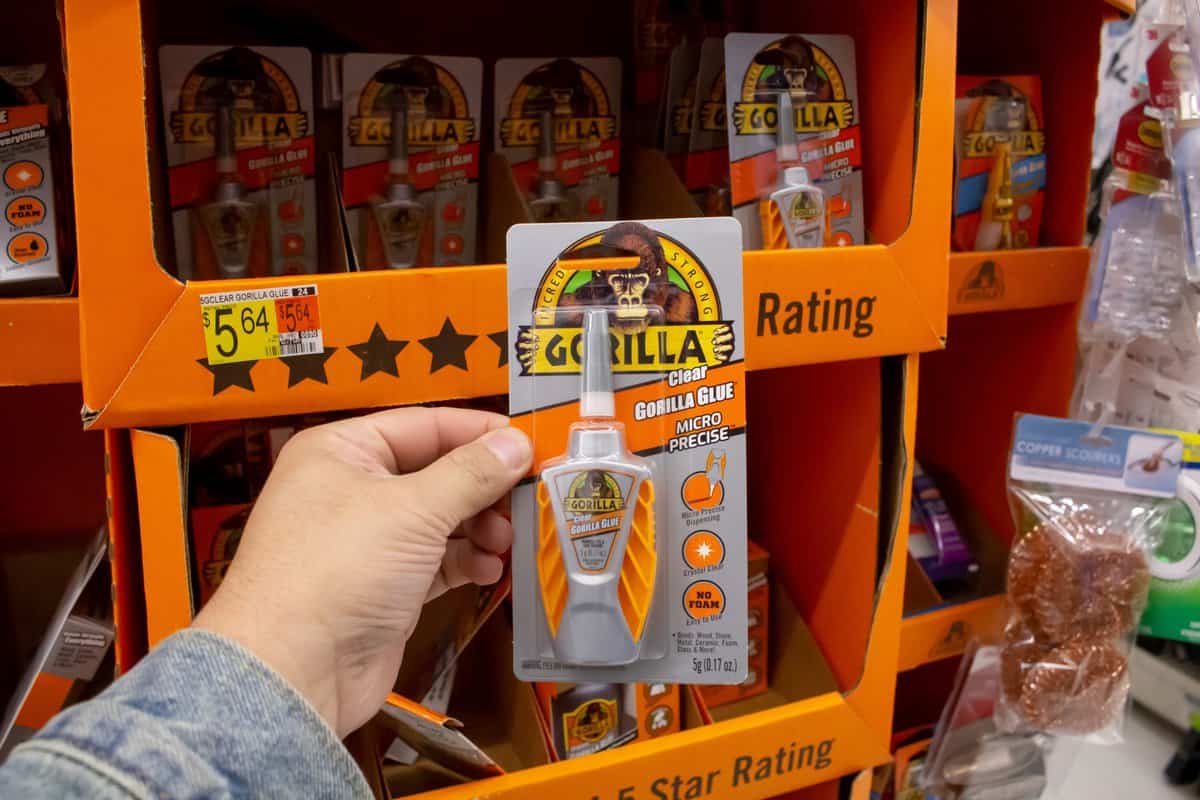
However, keep in mind that it's not suitable for all shoe materials. It's best used on rubber, leather, and vinyl (more on this later).
Avoid using Gorilla Glue on suede or other delicate materials as it can damage the material.
Benefits of Using Gorilla Glue for Fixing Shoes
When it comes to repairing shoes, Gorilla Glue is a reliable option. Here are some benefits of using Gorilla Glue for fixing shoes:
- Strength and durability: Gorilla Glue offers a robust bond that withstands daily wear, ensuring long-lasting repairs.
- Waterproof: Its waterproof nature ensures shoes remain secure and unaffected by moisture, making it ideal for various environments.
- Flexibility: The adhesive retains flexibility once cured, allowing shoes to move naturally without the bond cracking.
- Versatility: Suitable for multiple materials, from leather to rubber, it's ideal for repairing various types of footwear.
- Cost-effective: Instead of replacing damaged shoes, repairing them with affordable Gorilla Glue can lead to significant savings.
Considerations Before Using Gorilla Glue for Fixing Shoes
Before you start using Gorilla Glue to fix your shoes, you should consider a few things.
Material Compatibility
Before applying Gorilla Glue, ensure it's compatible with the shoe's material.
Whether your shoes are made of leather, rubber, or synthetic fabric, the glue's effectiveness can vary based on the material it's adhering to.
Preparation of Surfaces
Effective bonding requires clean surfaces. This means the shoe areas you intend to glue should be dry and free of dirt, grease, or debris.
Properly prepared surfaces can significantly enhance the strength of the bond.
Curing Time
Gorilla Glue doesn’t bond instantly; it needs time to set and cure.
Adhering to the manufacturer’s recommended drying time, which can be several hours to a day, ensures the repair's longevity and effectiveness.
Expansion Factor
Gorilla Glue has a unique characteristic: it expands as it dries.
This can be beneficial for filling gaps, but it's also essential to be mindful of the amount applied to avoid excess spillage or bulging out from the intended area.
Ventilation Considerations
Gorilla Glue, like many adhesives, can produce strong fumes.
So be sure to work in a well-ventilated to ensure safety and reduce the risk of inhalation.
Aesthetic Implications
Once dried, Gorilla Glue presents a certain color and texture.
If you're repairing a prominent or visible part of the shoe, consider how the adhesive's appearance might affect the shoe's overall aesthetic.
Durability in Extreme Conditions
While Gorilla Glue is known for its strength and durability, it's wise to consider the conditions to which the shoe will be exposed.
For shoes used in very wet or extreme temperature environments, evaluating the adhesive's performance under such conditions is crucial.
You might also like: How To Remove Nail Glue From Carpet
How to Properly Use Gorilla Glue for Shoe Repair
Here are some steps to follow when using Gorilla Glue for shoe repair:
1. Clean the Shoes
Before applying the glue, make sure the shoes are clean and dry. Use a cloth to wipe away any dirt or debris from the area that needs to be repaired.
2. Apply the Glue
Apply a small amount of Gorilla Glue to the area that needs to be repaired. Be careful not to use too much glue; it can expand as it dries and creates a mess.
3. Clamp the Shoes
Once the glue is applied, use a clamp or a heavy object to hold the shoes together while the glue dries.
Doing so will ensure the shoes stay in place and the glue dries evenly.
4. Let it Dry
Gorilla Glue takes about 24 hours to dry completely. Make sure the shoes are left undisturbed during this time.
5. Sand and Clean Up
After the glue has dried, make use of sandpaper to sand away any excess glue. Then, use a damp cloth to clean up any remaining glue residue.
Want to see the effectiveness of Gorilla Glue for yourself? Watch the video below:
Types of Shoes You Can Use Gorilla Glue
Gorilla Glue is a versatile adhesive that can be used to fix a wide range of shoe types.
Here are some types of shoes that you can use Gorilla Glue on:
- Athletic sneakers: Ideal for reattaching soles or fabric overlays that have detached.
- Leather shoes and boots: Effective for bonding porous leather materials, including detached soles.
- Sandals and flip-flops: Useful for repairing detached straps or soles in flexible footwear.
- Hiking boots: Can reattach detached soles or mend gaps in rugged footwear.
- Work boots: Offers a strong bond for footwear used in demanding environments.
- Ballet flats and dress shoes: Suitable for mending minor damages or attaching detached soles.
- Rubber rain boots: Its waterproof properties are ideal for sealing cracks or splits.
Continue reading: How Often To Condition Leather Boots
What to Avoid When Using Gorilla Glue for Fixing Shoes
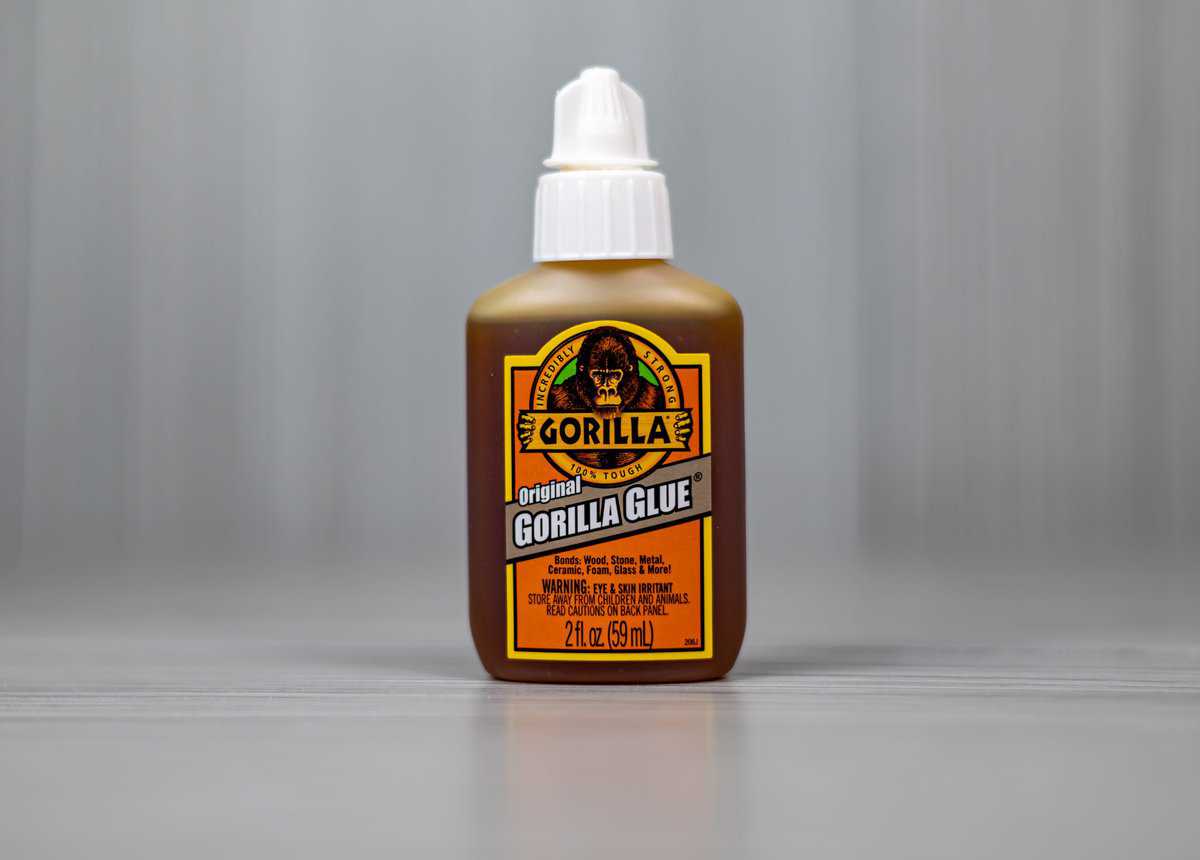
When using Gorilla Glue to fix shoes, there are a few things you should avoid to ensure a successful repair. Here are some things to keep in mind:
Overfilling Gaps
Gorilla Glue contains a foaming agent, so it's important not to overfill gaps.
If you do, there's a risk of excess product spilling out of the gaps, which can be challenging to clean up.
To avoid this, apply only a small amount of glue and massage it to fill the gaps.
Wait ten seconds to see how much or little the formula foams, then add more if necessary.
Not Clamping the Shoe
Gorilla Glue only takes 30 seconds to start drying and bonding objects together, but it takes 24 hours to cure completely.
During that time, holding the shoe together with a clamp or other tool is essential to ensure a strong bond. If you don't, the shoe may not be adequately repaired.
Using Gorilla Glue on the Wrong Materials
While Gorilla Glue is versatile and can bond many materials, it's best used to bond leather and rubber shoes.
It will not work on vinyl, foam, or plastic surfaces. Make sure you're using the correct type of glue for the material you're working with.
Not Being Patient
Gorilla Glue takes time to cure, so it's essential to be patient and wait 24 hours before wearing the shoes.
If you wear them too soon, the bond may not be strong enough, and the repair may fail.
Other Glue Alternatives to Consider When Fixing Shoes
If you're looking for alternatives to Gorilla Glue to fix your shoes, there are a few options to consider.
Here are some other types of glue that can be used to repair shoes:
Shoe Goo
Shoe Goo is a popular choice for repairing shoes — a transparent adhesive that can repair shoes' soles, tears, and holes.
One great feature of Shoe Goo is that it remains a flexible substance once it's dried up, meaning it can take a little extra tension or force without breaking.
It's also waterproof, perfect for outdoor shoes exposed to water.
Epoxy
Epoxy is known for its strength and durability, making it an excellent choice for repairing shoes that need a strong bond.
Epoxy can be used to repair soles, heels, and even the uppers of shoes. It's also waterproof, so it's great for outdoor shoes.
Cyanoacrylate
Cyanoacrylate, also known as super glue, is a fast-drying adhesive used to repair shoes.
It's great for minor repairs, such as fixing a tear in the upper of a shoe or reattaching a loose sole.
However, it's not as strong as Shoe Goo or epoxy, so it may not be the best choice for larger repairs.
Final Thoughts
Taking good care of our favorite shoes can sometimes mean repairing them instead of replacing them.
Gorilla Glue offers a potent solution for such repairs, but it's crucial to understand its properties, benefits, and best use cases.
We've delved deep into the advantages, considerations, application methods, and potential pitfalls of using Gorilla Glue for shoe repair.
Your shoes might just thank you for the extended lifespan!
We'd love to hear about your experiences or any other thoughts you might have on this topic. Let us know what you think!


